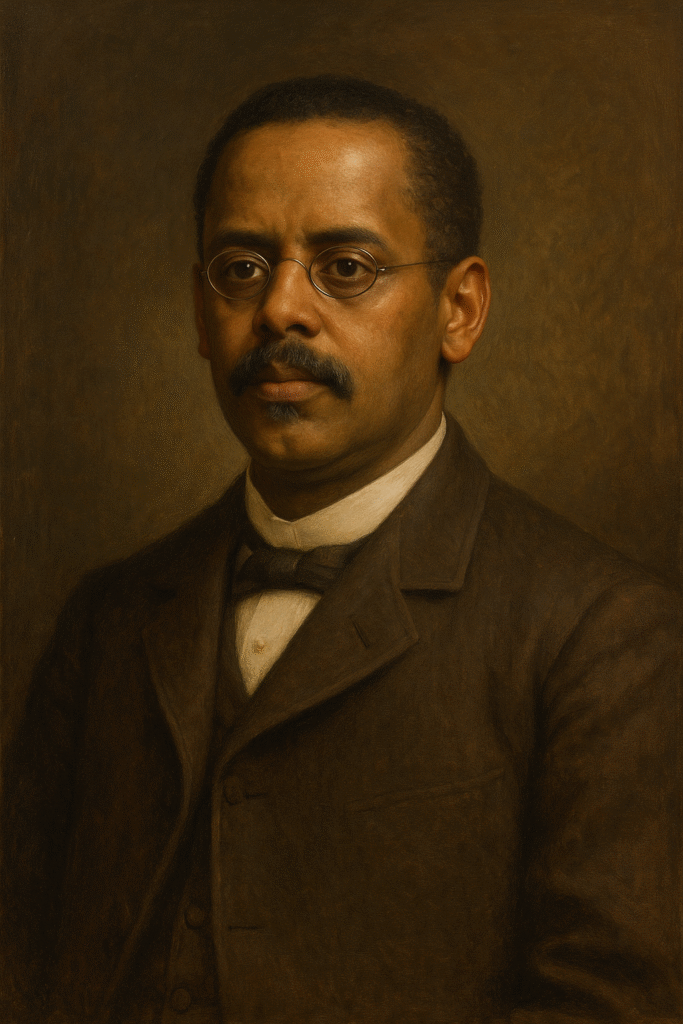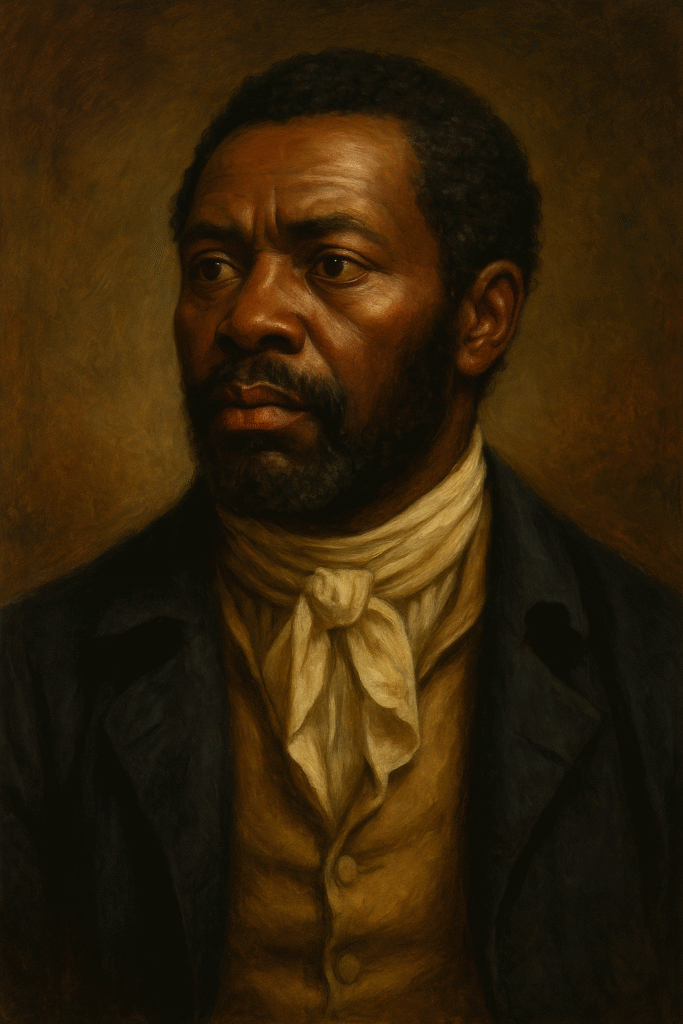Early Life and Background
Jean Baptiste Point Du Sable was born around 1745 in Saint-Domingue, a colony known today as Haiti. His early life was marked by a diverse cultural heritage, as he was the son of a French father and an African mother. This mixed lineage not only contributed to his unique identity but also endowed him with a wide array of skills and experiences that would later define his role as the founder of Chicago.
Growing up in Saint-Domingue, a place that was a hub of economic activity, Du Sable was immersed in an environment that fostered entrepreneurial spirit. His upbringing in a multi-ethnic and multilingual society enabled him to master various languages, including French and Spanish, which would prove advantageous in his later endeavors in North America. The environment of Saint-Domingue, which thrived on trade and commerce, exposed him to the intricacies of business and human relations, skills that became essential as he navigated through his future ventures.
Du Sable’s experiences in Saint-Domingue shaped his worldview and ambitions. He was no stranger to the complexities of colonial life, and the societal dynamics he witnessed would influence his understanding of community and commerce. His remarkable ability to adapt to changing circumstances provided him with the foundation necessary for his journey, eventually leading him to North America. Du Sable’s migration was not merely geographical; it represented a pursuit of opportunities and a desire to establish a legacy. These formative experiences laid the groundwork for his remarkable contributions to the region, particularly in the establishment of what would become the city of Chicago.
Establishment of Chicago’s First Settlement
Jean Baptiste Point Du Sable is credited with the establishment of Chicago’s first settlement at the mouth of the Chicago River during the late 1770s to early 1780s. This strategic location was not only pivotal for transportation but also served as an essential nexus for trade in the Great Lakes region. Du Sable, a man of mixed heritage, demonstrated considerable foresight and entrepreneurial spirit by recognizing the site’s potential long before it became the bustling metropolis we know today.
The settlement constructed by Du Sable was composed of several key structures that functioned as both a home and a trading post. His homestead included a large mansion that provided living quarters, stables that housed horses, and trading facilities essential for commerce. This complex became a focal point for various groups, as it attracted Native Americans, French fur traders, and later American settlers seeking goods and trade opportunities. Du Sable’s efforts established a foundation for economic activity in the region, turning the area into a melting pot of cultures and commerce.
Du Sable’s settlement was characterized by its multicultural interactions, with Native American communities often engaging in trade with the French fur traders who frequented the site. This exchange was crucial in laying the groundwork for future relations between different ethnic groups in the area. As a precursor to Chicago, Du Sable’s establishment set a precedent for the rich tapestry of cultural exchange that would continue to define the city long after his departure.
In essence, the complex Du Sable built at the mouth of the Chicago River was not merely a settlement; it represented a convergence of cultures and the beginning of an economic engine that would, decades later, evolve into one of America’s largest cities. Jean Baptiste Point Du Sable’s legacy thus serves as a reminder of the deep historical roots that underpin Chicago’s identity.
Legacy and Historical Erasure
Jean Baptiste Point Du Sable’s legacy is intrinsically linked to the very foundation of Chicago as a bustling urban center. As the first permanent non-Indigenous settler in the area, Du Sable not only established a trading post but also created a vital nexus for commerce and cultural exchange between Indigenous people and European settlers. His strategic positioning along the Chicago River facilitated trade routes that would later shape the city’s economic development. However, the rich narrative of his contributions has faced significant historical erasure, often overshadowed by more prominent figures in American history.
Du Sable’s marriage to Kitihawa, a Potawatomi woman, serves as a poignant symbol of unity and cooperation between differing cultures during a time of significant transition. Their partnership highlights the diplomatic relations and cultural exchange that existed between Indigenous peoples and European settlers in the early 19th century. Despite this, Du Sable’s contributions to Chicago’s formation remained largely unrecognized for many years, reflecting a broader trend in American historiography that often marginalizes the experiences and contributions of people of color.
The acknowledgment of Du Sable as Chicago’s founder gained traction only in recent decades, culminating in a formal recognition in 2006 that marked a crucial step toward rectifying historical oversights. This recognition is essential, not only in celebrating his role in shaping the city but also in fostering a more inclusive historical narrative that honors the diverse tapestry of Chicago’s roots. Acknowledging Du Sable’s legacy offers an opportunity to revisit the complexities of Chicago’s history and the cultural influences that molded it, providing a more comprehensive understanding of the city’s identity today.
Commemoration and Modern Recognition
Jean Baptiste Point Du Sable, recognized as the founder of Chicago, is increasingly acknowledged in contemporary society. His legacy is being commemorated through various initiatives aimed at honoring his invaluable contributions to the city’s foundation and history. One significant landmark named after him is the DuSable Harbor, located along the city’s waterfront. This harbor stands as a tribute to Point Du Sable’s role in establishing Chicago as a vital trading hub. Furthermore, the DuSable Black History Museum serves as a crucial space dedicated to celebrating African American culture and history, further integrating Point Du Sable’s narrative into the broader tapestry of Chicago’s diverse heritage.
Efforts to recognize Point Du Sable extend beyond mere naming of places. Educational programs, public art installations, and community events are part of a broader strategy to elevate awareness around his life and accomplishments. Initiatives such as Point Du Sable Day, celebrated annually in Chicago, serve to inform citizens about the city’s founder, fostering appreciation for the multifaceted roots of the metropolitan area. Such recognition not only honors Du Sable but also emphasizes the importance of acknowledging diverse contributors throughout history, especially those whose stories have been overlooked or marginalized.
In the current social climate, there is a growing understanding that the incorporation of diverse narratives enriches the collective understanding of history. The ongoing efforts to celebrate Point Du Sable align with this recognition, showcasing how individuals from various backgrounds have played pivotal roles in shaping the cities and cultures we inhabit today. As Chicago continues to evolve, it is essential to embody this inclusive spirit, ensuring that stories like that of Jean Baptiste Point Du Sable are preserved and celebrated for generations to come.










